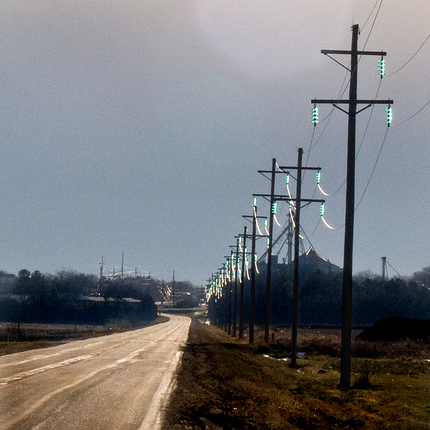By Stephanie Enloe, former staff member
Do transmission lines negatively impact human and animal health? Mounting research shows we have no cause for concern.
Typically, people are concerned about two separate forces from transmission lines: stray voltage and Electric and Magnetic Fields (EMF). Read on for an introduction to each of these forces and credible resource suggestions.
Stray Voltage: To ensure safety, all electric wiring systems must be grounded to the earth. Small currents that flow from grounding points are called neutral-to-earth voltage (NEV). Stray voltage is NEV that comes into contact with livestock and can originate from both on-farm and off-farm sources. At certain levels, stray voltage can cause behavioral changes in livestock.
Transmission developers have methods to avoid and mitigate stray voltage. Usually, this means siting transmission lines a certain distance from distribution lines. When negotiating an easement, landowners and developers should discuss how stray voltage will be avoided and/ or corrected. We have found that most developers are willing to work with landowners to “microsite” transmission infrastructure in a way that minimizes risk to a farm operation.
EMF: All electronic devices emit some level of Electric and Magnetic Fields (EMF), which can be damaging at high levels. At 1 billion hertz, X-rays are a familiar source of high EMF.
Transmission lines emit much lower levels of EMF than most household devices. For example, computers give off 60 to 100 hertz, while transmission lines give off 50 to 60 hertz. Because EMF decreases over distance, at 300 feet, EMF from a transmission line is similar to average levels within our homes and offices.
While an early study found a weak association between low EMF and childhood leukemia, larger follow-up studies did not confirm these findings. There is no epidemiological evidence for other health consequences, and no study has found evidence of a cause and effect relationship between low levels of EMF and negative health effects. If a landowner is still worried about EMF, developers should work with them to increase setback distances from homes and buildings.
Resources: The National Institutes of Health maintains a detailed webpage dedicated to EMF. The Public Service Commission of Wisconsin report entitled, “Environmental Impacts of Transmission Lines,” also provides a balanced source of information on EMF and stray voltage.
The Center for Rural Affairs works to inform affected communities about the benefits and drawbacks of transmission lines. We believe early stakeholder engagement is the key to maximizing benefits and reducing unwanted impacts. This article is the second in an educational newsletter series on transmission, which provides an overview on some of the most common questions and concerns rural stakeholders ask on this topic. To see the first article, "What are Multi-Value Project transmission lines," click here.




